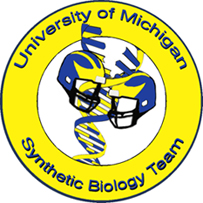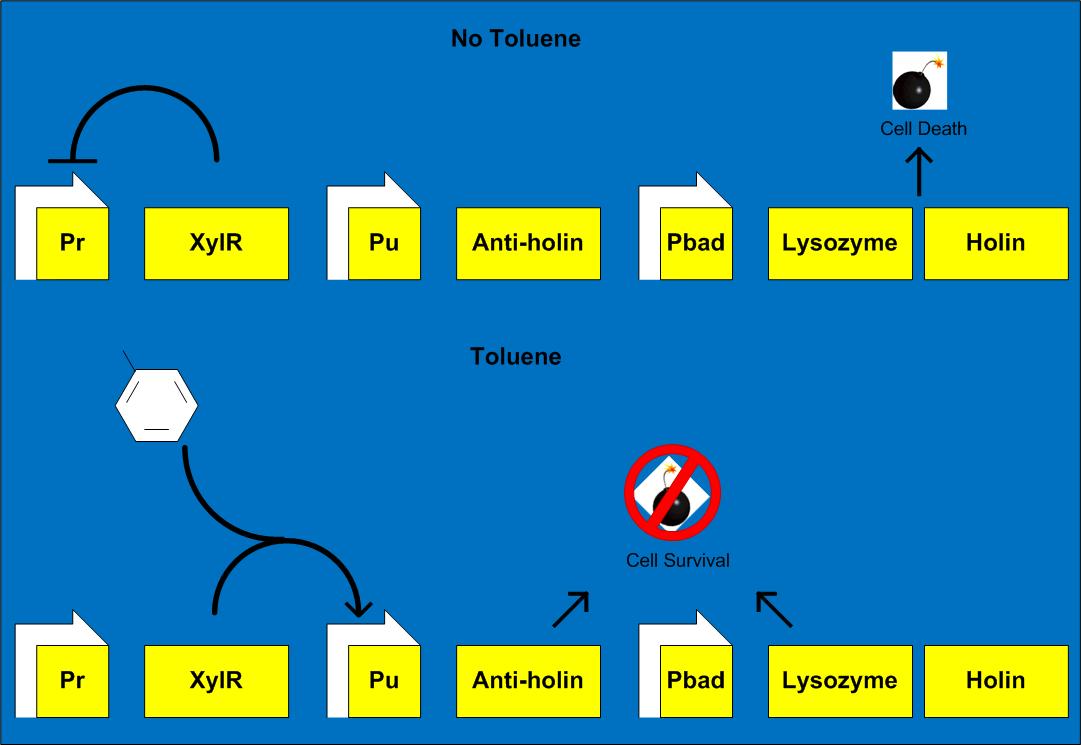Team:Michigan/Project
From 2009.igem.org
| ||||||||||||||||||||||
|---|---|---|---|---|---|---|---|---|---|---|---|---|---|---|---|---|---|---|---|---|---|---|
|
The Toluene TerminatorOverview
The Toluene Terminator is a Pseudomonas device that aims to identify the toxic compound toluene in an environmental setting (e.g. a spill into soil from an underground petrol tank), move to and uptake it, metabolize it, and destroy itself when all of the toluene has been metabolized. This device will require four basic modules: toluene chemorecognition, chemotaxis, toluene metabolism, and a suicide mechanism. This year we have been working on toluene metabolism and the suicide mechanism. Toluene MetabolismThe goal of this project is to work with the toluene degrading abilities that already exist in P. putida mt-2 (ATCC 33015) on the pWW0-TOL plasmid. The pathway on this plasmid is comprised of the upper pathway where toluene is metabolized into catechol and the lower, meta-pathway where catechol is converted into acetaldehyde and pyruvate. The regulation of toluene degradation on the pWW0 plasmid is presented below. picture here Upper Pathway
The Pr (regulator) promoter is a constitutive promoter in P. putida mt-2 and expresses the XylR regulator protein. When there is no toluene in the system, the XylR protein acts as a repressor for Pr to prevent leaky expression. When toluene is present, the toluene binds with the XylR regulator protein to create a complex that activates the Pu (upper pathway) promoter and starts to degrade toluene. The upper pathway enzymes XylA, XylB and XylC degrade toluene into catechol. Lower Pathway
Sensing Toluene
Suicide MechanismThe Terminator's suicide mechanism, or kill switch, operates through the T4 phage's holin genetics. The suicide operon consists of an arabinose-dependent promoter controlling expression of the holin and endolysin proteins, followed by the Pu promoter controlling the antiholin gene. This way, none of the genes are activated until the device is released into the contaminated area, along with a quantity of arabinose. This results in the arabinose-mediated expression of the lytic genes holin and endolysin, as well as the toluene-mediated expression of antiholin, which posttranslationally inhibits the lytic proteins. Then, when the toluene disappears (when it is all metabolized) from the local region of the individual device, antiholin is no longer expressed, allowing the lytic proteins to destroy the cell.
|
|---|
 "
"

